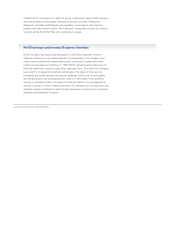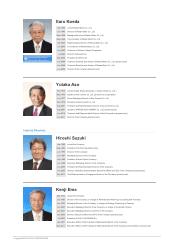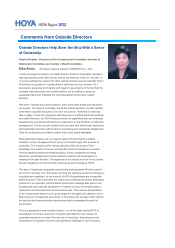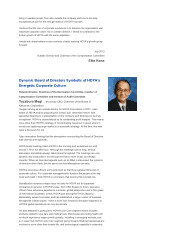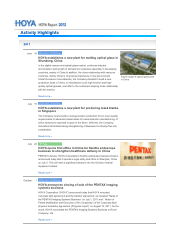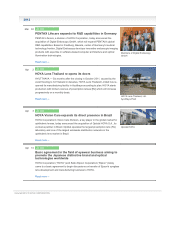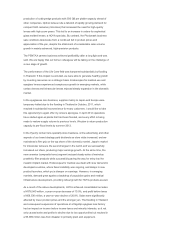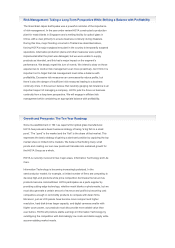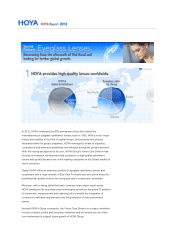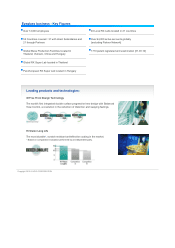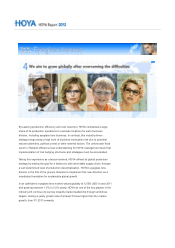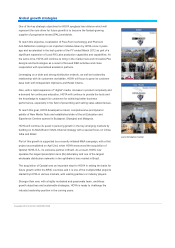Pentax 2012 Annual Report Download - page 49
Download and view the complete annual report
Please find page 49 of the 2012 Pentax annual report below. You can navigate through the pages in the report by either clicking on the pages listed below, or by using the keyword search tool below to find specific information within the annual report.
production of cutting-edge products with 500 GB per platter capacity ahead of
other companies. Optical lenses rode a tailwind of rapidly growing demand for
compact SLR cameras (mirrorless) that increased the need for high-quality
lenses with high zoom power. This led to an increase in orders for aspherical
glass molded lenses, a HOYA specialty. By contrast, the Photomask business
saw conditions deteriorate from a continued fall in product prices and
appreciation of the yen, despite the attainment of considerable sales volume
growth in mainly advanced, high-precision products.
The PENTAX camera business achieved profitability after a long fight and was
sold. We are happy that our former colleagues will be taking on the challenge of
a new stage of growth.
The performance of the Life Care field was hampered substantially by flooding
in Thailand. If this impact is excluded, we were able to generate healthy growth
by investing resources on a strategic basis. Endoscopes for medical use and
eyeglass lenses experienced conspicuous growth in emerging markets, while
contact lenses and intraocular lenses enjoyed steady expansion in the domestic
market.
In the eyeglasses lens business, supplies mainly to Japan and Europe were
temporary halted due to the flooding in Thailand in October, 2011, which
resulted in substantial inconvenience for many customers. I would like to take
this opportunity to again offer my sincere apologies. In April 2012 operations
have started again at plants that had been flooded, and every effort is being
made to restore supply volume to previous levels. We plan to return production
capacity to pre-flood levels by summer 2012.
In the Eyecity contact lens specialty store business, online advertising and other
aspects of our brand strategy paid dividends as store visits increased, and we
maintained a firm grip on the top share of the domestic market. Japan's market
for intraocular lenses is the second largest in the world, and we successfully
increased our share, producing major earnings growth. At the same time, the
new ceramics (composite bone) segment enjoyed steady sales of mainstay
prosthetic filler products while successfully paving the way for entry into the
metallic implant market. Endoscopes for medical use dealt with slow demand in
developed countries, where fiscal instability was ongoing, and delays in new
product launches, which put a damper on earnings. However, in emerging
markets, demand grew against a backdrop of population gains and medical
infrastructure development, providing robust growth for HOYA products as well.
A
s a result of the above developments, HOYA achieved consolidated net sales
of ¥376,940 million, a year-on-year decrease of 10.9%, and profit before taxes
of ¥58,530 million, a year-on-year decline of 20.8%. Sales were significantly
affected by lower product prices and the stronger yen. The flooding in Thailand
and consequent suspension of operations at a flagship eyeglass lens factory
had an impact on income before income taxes and minority interests, as it not
only caused sales and profits to decline due to lost opportunities but resulted in
a ¥5,909 million loss from disaster in primarily plant and equipment.


